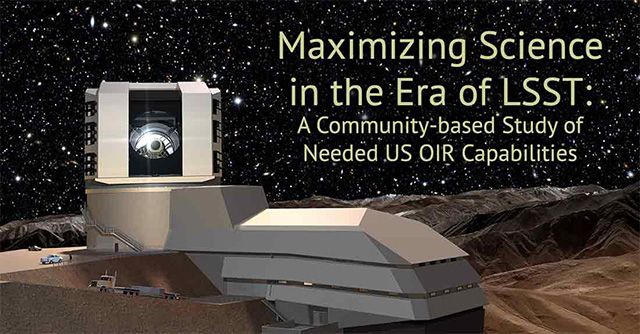How You Can Help Maximize Science in the LSST Era
Joan Najita NSF's NOIRLab
The Large Synoptic Survey Telescope (LSST) will be a discovery machine for the US astronomical community, revealing astrophysical phenomena from the solar system to the outer reaches of the visible universe. While many discoveries will be made using LSST data alone, others will require optical/infrared (OIR) supporting capabilities, i.e., resources such as observing time on telescopes, instrumentation, software, computing and data-management resources, access to archival data, etc. A new study, "Maximizing Science in the Era of LSST: A Community-based Study of Needed US OIR Capabilities," aims to quantify and prioritize the supporting capabilities needed to maximize the science enabled by LSST.
The study, led by the National Optical Astronomy Observatory (NOAO) and LSST, is funded by the Kavli Foundation and endorsed by the National Science Foundation's Division of Astronomical Sciences (NSF/AST). It will build on the report commissioned by NSF and the National Academy of Sciences (Optimizing the U.S. Ground-Based Optical and Infrared Astronomy System in the Era of LSST, the "Elmegreen report") and the 2013 NOAO report Spectroscopy in the Era of LSST.
The goal of the study is to identify and assess quantitatively the resources needed to accomplish LSST-enabled science, based on community input. Because the study is science-driven, representative science programs will be worked out in detail to illustrate how science goals are linked to the quantitative requirements. In addition to quantifying and prioritizing supporting capabilities, the study will highlight ways that existing and planned resources could be positioned to accomplish the science goals and identify high-priority future investments for OIR infrastructure.
Your Input Needed
Community input is critical to the success of this effort. You can participate in two ways:
- Fill out the online survey describing the LSST-enabled science you intend to carry out and the supporting capabilities you need to accomplish that science. Deadline: 15 January 2016.
- As part of the survey, indicate whether you would be interested to participate in a study group and help develop illustrative science cases in quantitative detail. A subset of study group members will participate in a workshop that brings together the results of the individual study groups and prioritizes the needed capabilities.
Further details about this study are available at the study website.
Please email Joan Najita or Beth Willman with questions about this study.


